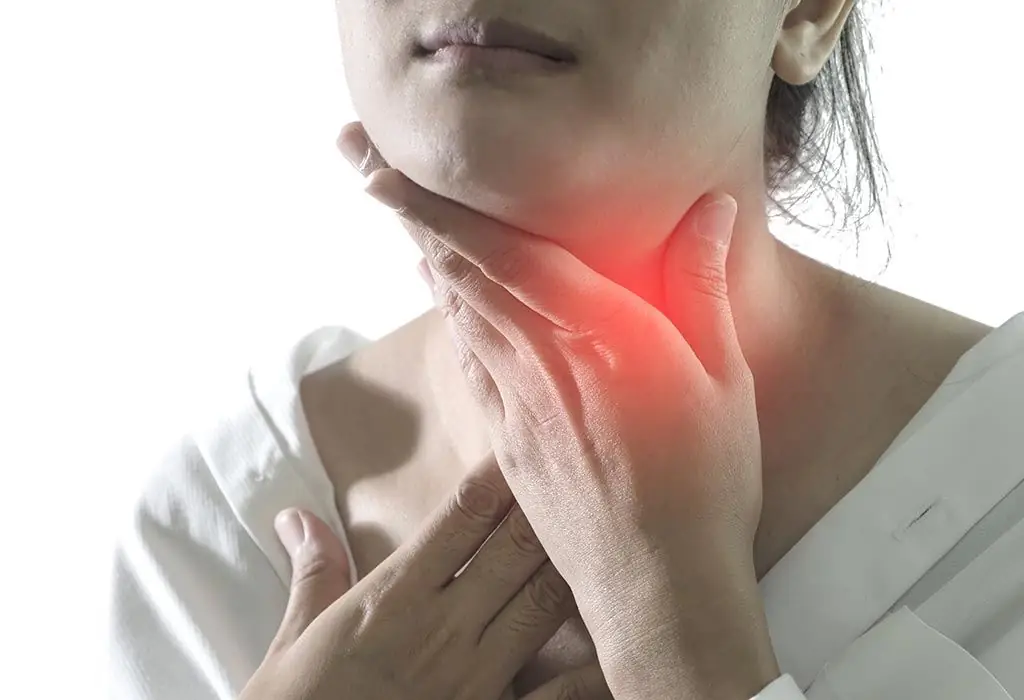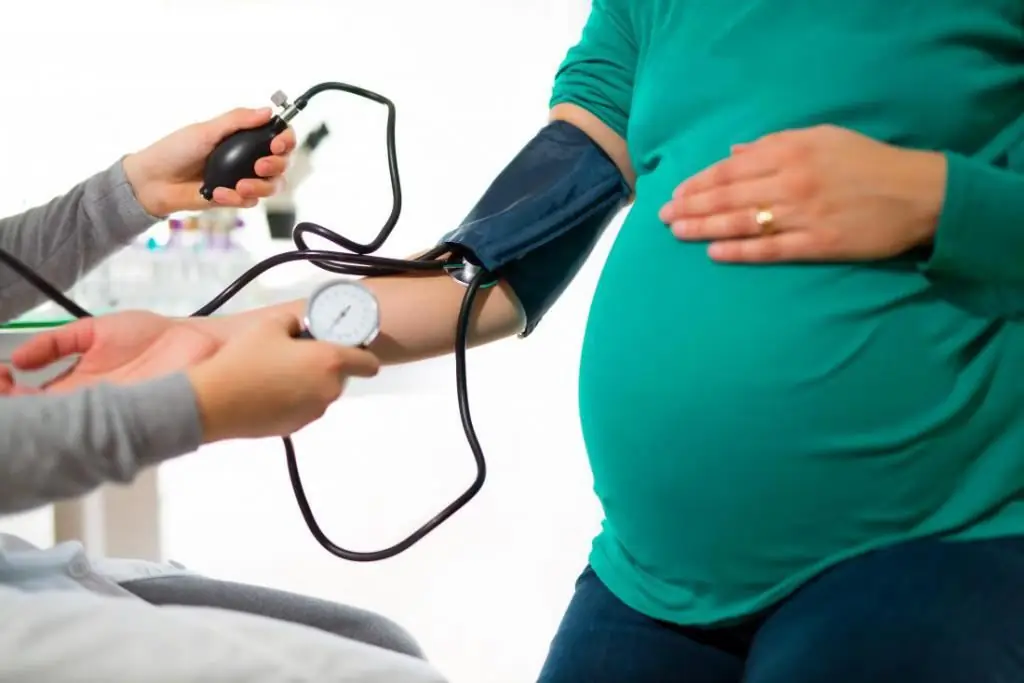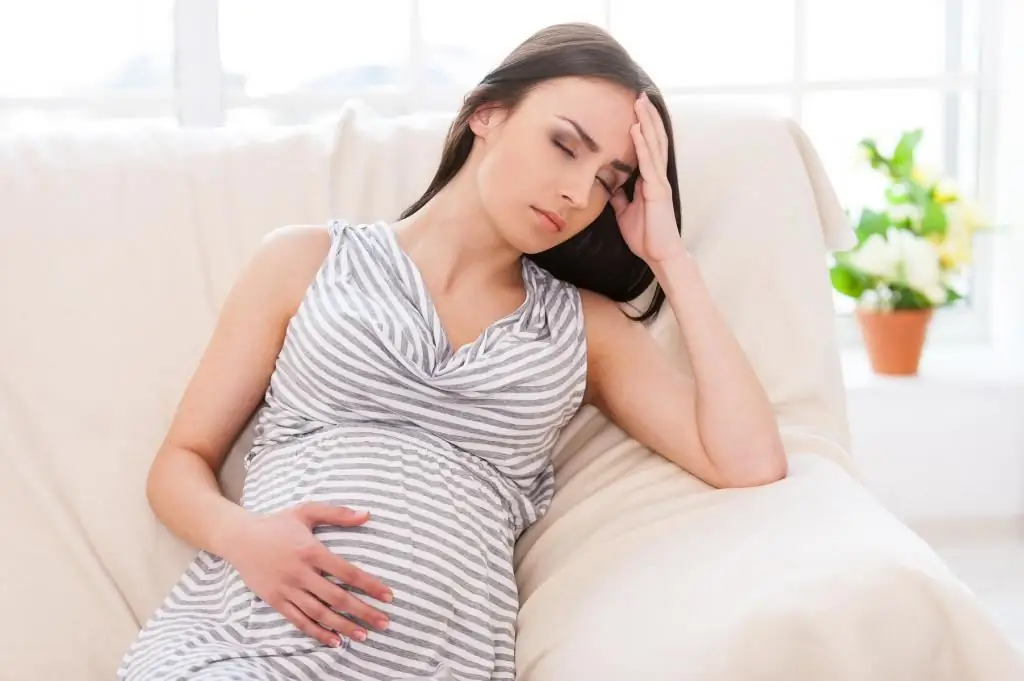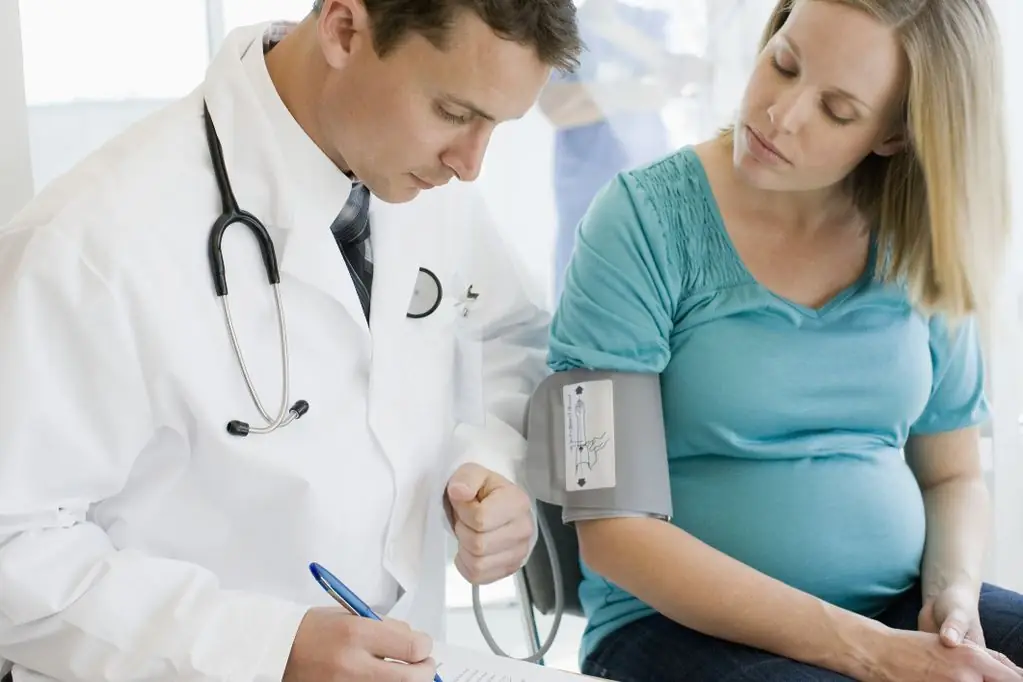2026 Author: Priscilla Miln | [email protected]. Last modified: 2025-01-22 17:55:27
Anemia is a disease of the blood system associated with a decrease in hemoglobin and a simultaneous decrease in the number of red blood cells. As a result, the transfer of oxygen to the cells slows down, and the human condition worsens. Most often, this concept is referred to with a lack of iron in the body. According to the World He alth Organization, iron deficiency anemia (or anemia) affects 29% of all women of reproductive age and 28% of pregnant women. And these figures have not changed over the years.
About why anemia occurs during pregnancy, what are the symptoms of this condition and what is the danger of iron deficiency in the body for the mother and fetus, we will tell in our article. Let us dwell in detail on the prevention of anemia and the principles of nutrition during the period of bearing a baby.
Causes of iron deficiency anemia

During pregnancy, not only hormonal changes occur in a woman's body, but also a decrease in the concentration of hemoglobin in the blood. main reasoniron deficiency anemia, doctors call an increase in the need for this trace element by almost 6 times (from 0.6 to 3.5 mg per day). This indicator exceeds the body's ability to absorb iron from food. But this element is essential for the formation of the placenta and the development of the fetus. The consequences of anemia during pregnancy can be quite serious.
In general, all causes of anemia can be divided into three groups:
- Insufficient intake of iron in the body. Poor-quality and unbalanced nutrition, vegetarianism, diet - all this leads to the fact that the concentration of the element in question in the body is sharply reduced. Nutrition during pregnancy and lactation should be complete. A woman's daily diet must include foods high in iron.
- Chronic diseases of the internal organs, in particular the stomach and intestines. If the expectant mother has diseases such as ulcers, gastritis with low acidity, dysbacteriosis, then even with a balanced and high-quality diet, a sufficient amount of iron does not enter the bloodstream.
- Frequent nosebleeds and other bleeding.
Anemia often occurs in multiple pregnancies. The need for iron in this case increases by 2 times than when carrying one fetal egg.
During pregnancy, it is quite difficult to identify the true cause of anemia, since many examinations are prohibited during this period. Therefore, it is necessary to engage in the prevention and treatment of anemia at the stage of planning a child.
What is the danger of anemia duringpregnancy?
Diagnosing and treating anemia is important even before conception. Then the course of pregnancy will occur with the least consequences for the child and mother. Prolonged anemia can lead to hypoxia and fetal hypotrophy, and for a woman with low hemoglobin, the risk of blood loss during labor increases. But that's not all that anemia is dangerous during pregnancy.
Often in the early stages of pregnancy, the symptoms of anemia do not appear at all. But this does not mean that such a state is safe. Even with mild anemia in pregnancy, the fetus feels a lack of oxygen. And this, in turn, is fraught with intrauterine growth retardation and insufficient supply of nutrients to the placenta.
Anemia usually appears in the second half of pregnancy, between 29 and 36 weeks. At this time, the need for iron, necessary for the production of hemoglobin, increases several times. In addition, the volume of circulating blood in a woman's body increases, it liquefies, which leads to a decrease in the number of red blood cells.
So, why is anemia dangerous for a mother:
- the occurrence of toxicosis in the second half of pregnancy;
- risk of preterm birth;
- excessive bleeding during childbirth as a result of impaired blood clotting;
- decrease in milk production during lactation.
When the mother is anaemic, the baby does not get enough oxygen and the nutrients it needs for growth and development. As a result of this, he maybe born small and with a weak immune system. Such children are more prone to colds and infectious diseases than their peers.
Signs of anemia during pregnancy

Women who are carrying a child, the symptoms of anemia are practically the same as those of other people. In addition, all the signs below can be observed in absolutely any pregnant woman. This is due, first of all, to the fact that every expectant mother has a risk of developing iron deficiency, and it especially increases in the second and third trimesters. But to make a final diagnosis of anemia of the 1st degree during pregnancy, the second or third, is possible only on the basis of the results of a blood test.
How to identify anemia in a future mother by external signs? To do this, you need to know that the main symptoms of anemia during pregnancy are:
- pale color of the skin and mucous membranes, which may be caused by oxygen starvation of tissues;
- muscle weakness and excessive fatigue, which is associated with a decrease in the amount of energy in the body;
- dizziness and fainting;
- drowsiness, depression;
- excitement and insomnia;
- decrease in muscle tone;
- headache accompanied by tinnitus;
- dryness and increased flaking of the skin;
- appearance of cracks on the lips and wounds in the corners of the mouth;
- dryness, brittleness and hair loss;
- change in taste preferences for the worse (the desire to eat chalk, earth or soap does notis the norm);
- susceptibility to urinary tract infections, pain when urinating, urinary incontinence.
The expectant mother should pay attention to the appearance of those signs in her that have never been observed before. And you do not need to immediately associate them with the "quirks" of the pregnant woman. It would be much more competent to consult a doctor and get recommendations from him about further actions.
Depending on the general he alth of the future mother, the type and degree of the disease and its stage, the symptoms of anemia may vary. Detailed information about this is provided below.
Who is at risk?
Studies to determine the level of hemoglobin in the blood are performed in the first and second trimesters. According to the results of the analyzes, expectant mothers who are at risk for anemia are identified. During pregnancy, if a lack of hemoglobin was detected in the first trimester, a woman is prescribed preventive measures. The final diagnosis and the need for complex treatment are determined in the second trimester, after a second blood test.
Risk groups for iron deficiency anemia during pregnancy include:
- Women from families with low socioeconomic status. As a rule, their diet is defective and unbalanced, with insufficient iron content, which results in a decrease in the level of hemoglobin in the blood.
- Vegetarianism, dieting to lose weight very often lead to anemia during pregnancy.
- Expectant mother's history of chronic diseases(diabetes mellitus, gastritis, heart defects).
- Infectious diseases of the kidneys, liver and other organs suffered during pregnancy (viral hepatitis, acute pyelonephritis, etc.).
- Various bleeding with uterine fibroids, endometrial polyps, etc.
- Women who have given birth to four or more children. For them, this state is inevitable.
- Women who often give birth. The risk group includes expectant mothers who have re-pregnancy occurred earlier than 4 years after the previous birth. After pregnancy and lactation, the body needs at least 2.5 years to recover. If this period is not maintained, chronic anemia sets in.
- Women diagnosed with anemia in previous pregnancies.
- Pregnancy under 18 and over 30.
- The level of hemoglobin in the first trimester of pregnancy is 120 mg/l and below.
- Complications during real pregnancy, such as toxicosis, viral diseases, threatened miscarriage.
- Multiple pregnancy. In this case, anemia is almost always diagnosed, since iron is needed 2 or 3 times more than when bearing one fetus.
- Polyhydramnios.
Diagnosis of anemia during pregnancy

Determining the level of hemoglobin is among the mandatory studies during pregnancy. This indicator is determined by the results of a general blood test. And already on its basis, the doctor can putfinal diagnosis of iron deficiency anemia and determine the extent of the disease. In addition, the trimester during which the analysis was performed is taken into account.
In the early stages, a doctor can make such a diagnosis at a hemoglobin level below 110 mg / l. If the woman's test result is close to this, the gynecologist diagnoses mild anemia during pregnancy.
In the second trimester, the critical value for diagnosis is 105 mg/L. In addition, the attending physician may prescribe additional studies of the volume of circulating blood. In particular, erythrocyte hypochromia and the level of serum iron are determined. This will allow the doctor to develop the correct tactics for the treatment of anemia and avoid the negative consequences of the disease for the mother and fetus.
Types and degrees of anemia
To understand how severe the condition of a pregnant woman is, and to determine the need for treatment of an identified disease, one should understand what exactly happens in a woman's body during the period of gestation. Depending on this, 2 types of anemia during pregnancy are distinguished:
- Physiological, or gestational. From the middle of the second trimester, this condition develops in almost every pregnant woman. It is associated with an uneven increase in the volume of plasma and red blood cells. Often no treatment is required in this situation.
- True. Such anemia occurs in 90% of pregnant women. In this case, there is a decrease in the number of red blood cells and a decrease in hemoglobin in each of them.
There are 3 degrees of anemiaduring pregnancy:
- Grade 1 - a mild form of anemia, in which the hemoglobin level is 110-91 mg / l. Often occurs without any symptoms. It is important to timely identify iron deficiency at this stage in order to take timely measures and prevent the development of the disease to more severe forms. This condition is diagnosed in the laboratory, according to the results of a general blood test.
- Degree 2 - anemia during pregnancy occurs in an average or moderate form. Judging by the results of the tests, the hemoglobin level at this stage is 90-71 mg / l. The second degree of iron deficiency anemia is accompanied by certain symptoms, which is explained by oxygen starvation of tissues. A pregnant woman has weakness, drowsiness and fatigue, headaches, decreased concentration, irritability.
- Degree 3 - a severe form of anemia. The hemoglobin level in this disease is 70-40 mg / l. The symptoms of this degree coincide with the main signs of the disease described above in the article, but they appear more clearly. Unlike anemia during pregnancy of the 1st degree, moderate and severe forms pose a real threat to the life and he alth of the woman and the fetus.
Consequences of anemia for mother and child

Low hemoglobin levels in the blood negatively affect the he alth of a pregnant woman and adversely affect the development of the fetus. Often the effects of anemia during pregnancy are irreversible.
For a woman, anemiadangerous in that it can lead to the development of one or a whole group of the following conditions:
- formation of placental insufficiency;
- placental abruption;
- preterm birth;
- weak generic activity;
- bleeding during delivery;
- increased blood pressure;
- the occurrence of late toxicosis (preeclampsia), which is a consequence of a violation of protein metabolism.
- postpartum complications, weakness, reduced immunity;
- weak lactation, insufficient milk production;
- development of purulent-septic complications in the postpartum period.
But the negative effects of anemia do not only affect the mother. They are also dangerous for the fetus. The following consequences of anemia during pregnancy for a child are distinguished:
- intrauterine hypoxia - the child does not receive enough oxygen, which he needs for the proper formation of all organs and systems;
- delay or arrest of fetal development;
- development of iron deficiency anemia in a newborn;
- poor weight gain due to inadequate nutrient intake.
Iron deficiency anemia during the period of bearing a baby is a dangerous disease that requires increased attention from a woman and a doctor. And it is not always possible to raise the level of hemoglobin only by adjusting the diet. More serious medical treatment is often required.
Nutrition for pregnant women with iron deficiency

The daily human need for this trace element is 15-20 mg, of which only 5-10% is absorbed by the body. And only with anemia in pregnant women, the absorption of iron from products increases to 25% and amounts to 2.5 mg. Although this is very small compared to the needs of the body in a special period.
In the body, iron from food comes in two forms:
- Gem. It is found in animal products, which include meat, poultry, fish, and eggs. The absorption of iron from them is quite high and just makes up the same 25%. Most iron is found in beef, lamb, turkey, rabbit, beef tongue. The concentration of this trace element is high in cod liver, pink salmon, seafood, pork and beef liver. These products are recommended to raise iron levels in mild anemia during pregnancy.
- Non-heme. His body receives from plant products, which form the basis of the diet of a pregnant woman. Such iron is absorbed much worse, only 3-5%. The absorption of microelements from such products is recommended to be increased with the simultaneous intake of vitamins C and B12. Iron is found in plant foods such as buckwheat, oats, asparagus, spinach, green peas, legumes, nuts, pomegranate, and corn.
The diet of a pregnant woman should be complete and varied. And this means that it should include dairy and sour-milk products, eggs, cheese, fresh vegetables and fruits. A balanced diet is needed from the first weekspregnancy.
Anemia treatment

The need of a woman's body for iron during gestation increases several times. But it is impossible to make up for the deficiency of this microelement only with a high-quality, complete and balanced diet. The body absorbs approximately 2.5 mg per day, while the need for it is much higher. At the same time, the absorption of microelements from special medical preparations is 15 times higher. If a woman is diagnosed with grade 1 anemia during pregnancy, an attempt to raise the level of iron in the blood can be made by adjusting the diet. If the form of this disease is moderate or severe, foods, vitamin complexes and folk remedies will not help in this case. Anemia during pregnancy can only be cured with special drugs.
Depending on the degree of the disease and the condition of the pregnant woman, the doctor prescribes drugs intended for oral or intramuscular (intravenous) administration.
The first group includes medicines containing ferrous s alts ("Sorbifer", "Totema", "Ferronat" and others) and trivalent ("M altofer", "Ferlatum"). All of the medicines listed above are for oral use.
What is the difference between these drugs? Divalent iron s alts penetrate the body more easily, are well absorbed, but their intake is often accompanied by side effects. These include constipation and adverse reactions fromside of the gastrointestinal tract. Medicines containing ferric s alts do not cause such side effects, but they are absorbed worse by the body. Regardless of the drug taken, it is not so easy to raise the level of hemoglobin in the blood. It may take more than one month to increase its concentration in the blood.
Much faster iron deficiency in the body is replenished with intravenous or intramuscular administration of drugs. As a rule, such emergency therapy is prescribed in the last stages of pregnancy and before the upcoming birth in order to prevent the development of negative consequences during and after childbirth.
Prevention of iron deficiency anemia

Anemia can be prevented even before pregnancy. Preventive measures are recommended at the planning stage. As a rule, 3 months before the intended conception, the attending physician still prescribes folic acid intake at 250 mcg daily. A woman continues to take this vitamin until the 12th week of pregnancy. Folic acid prevents the development of numerous malformations in the fetus, and its deficiency in the body is just as dangerous as iron deficiency.
At the same time as taking vitamin B12 for preventive purposes, a woman is prescribed iron supplements at 60 mcg. To prevent the development of anemia during pregnancy, it is recommended to combine the intake of folic acid and extended-release iron. Vitamins and elements important for the body are part ofcombined preparations intended for planning, pregnant and lactating women.
Do not forget about good nutrition, not only during pregnancy, but also before it. A woman needs a balanced diet even if she does not have iron deficiency anemia. This will be an excellent prevention of anemia and the key to the development of a he althy child.
Recommended:
Chronic tonsillitis during pregnancy: causes, symptoms and gentle treatment

How dangerous is chronic tonsillitis during pregnancy? Every woman who plans to become a mother in the near future may be interested in a similar question. The fact is that this disease is quite widespread throughout the world. It is very difficult to resist its pathogens (as a rule, bacteria, less often fungi), because they do not care about gender or age. But the worst thing is that they do not recognize social status
Hypotension during pregnancy: possible causes, symptoms, treatment, normal pressure during pregnancy, advice and recommendations from a gynecologist

What is hypotension during pregnancy? Is it a simple ailment, or a severe pathology that requires immediate medical attention? That is what we will talk about today. During the period of bearing a baby, every woman is faced with various ailments, because the body works "in three shifts", and gets tired in order. At this time, chronic diseases are exacerbated, and "sleeping" ailments are awakened, which could not be suspected before pregnancy
Headache during pregnancy: causes and treatment. Cure for headaches during pregnancy

Headache during pregnancy is a fairly common occurrence in expectant mothers. According to statistics, every fifth woman suffers from it. Pain can be a symptom of a wide variety of pathological conditions, but then its characteristics will be different. Of great importance for the diagnosis of diseases is the nature of sensations, their localization, duration, conditions under which they arise, weaken or intensify
Inflammation of the gums during pregnancy: symptoms, possible causes, necessary treatment, the use of safe and gynecologically approved drugs, advice and recommendations from denti

Inflammation of the gums during pregnancy is a very common occurrence that should never be ignored. The main causes of this disease are stressful situations, insufficient amounts of nutrients in the body, vitamins, and other factors
Pregnancy and epilepsy: causes, symptoms, first aid for a sudden attack, pregnancy planning, necessary treatment and strict medical supervision

Epilepsy is considered a rather serious disease in which there is a violation of the central nervous system. Such an ailment imposes certain restrictions on patients in life. For this reason, many women suffering from this disease are interested in whether pregnancy and epilepsy are generally compatible. After all, everyone wants to give birth to a strong and he althy child, even despite the fact that such an unpleasant diagnosis was made

